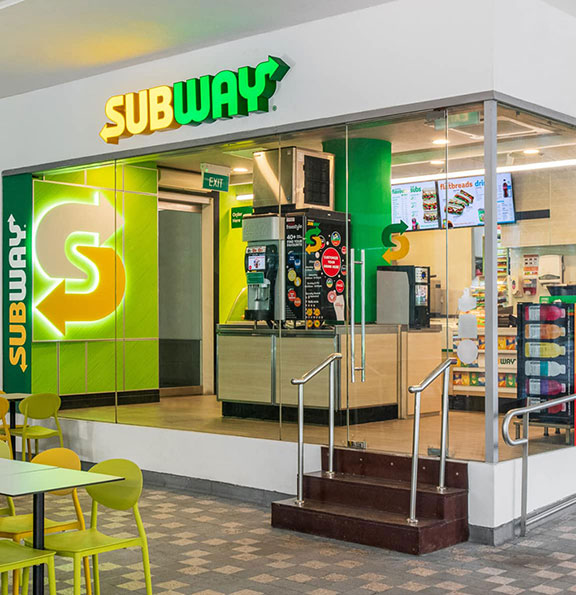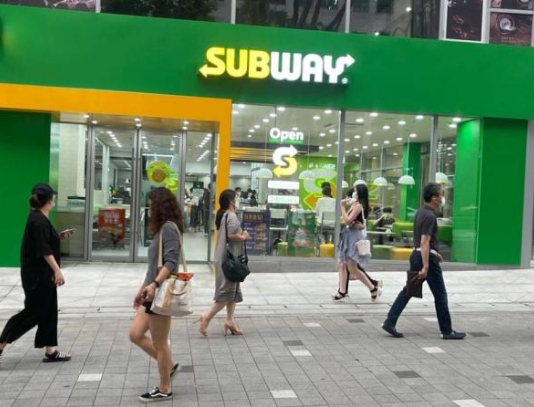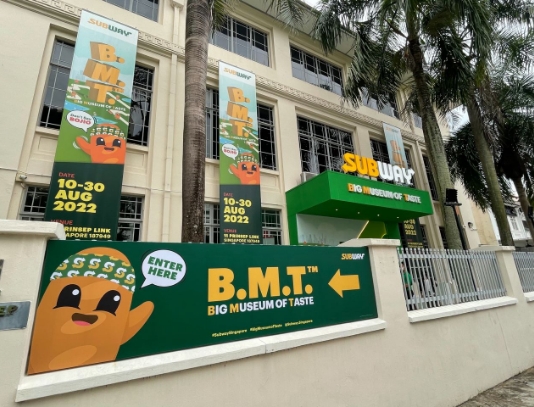Q&A
01
How did Subway perform this year (2nd year into the pandemic) and what are your plans for 2022?
The pandemic hit the world hard but Subway adapted quickly. We remained laser-focused on delivering a great experience for our guests, while strengthening our network of local franchisees. Globally, the results are showing – we are beating our 2021 plans and still going strong. In Asia Pacific, besides surpassing the aggressive goals we have set for this year, we are also beating our pre-Covid 2019 performance.
In 2021, we achieved several key milestones for Subway in Asia Pacific. In October, we opened our first restaurant in Indonesia together with Subway’s very first country franchise partner in the world, PT Sari Sandwich Indonesia, who will solely spearhead Subway’s development in Indonesia. This marked a pivotal point in the evolution of Subway’s business model, as we adapt to meet market demands.
Our brand tracking scores have also improved overall in the region, as strong marketing initiatives drive key brand values for Subway. In China, an innovative collaboration with local esports brand, Netease, and beverage partner, Pepsi, led to a successful ‘phygital’ brand experience for guests, effectively increasing Subway’s ‘O2O’ presence in the country. Riding on the K-drama wave, Subway has also become a household name in South Korea, and also most of Asia Pacific, through the clever use of product placements in Korean drama series to build brand relevance.
2022 will be a pivotal year for us as we expect our development and marketing plans to come to fruition, with the gradual opening of economies in the region, post pandemic. We expect to see more of our non-traditional business concepts launching in this part of the world, with the objective of offering convenience to our guests. There are also more exciting marketing initiatives in the pipeline, as we anticipate more region-wide campaigns to drive brand recall and strengthen Subway’s brand identity.
Q&A
02
What has Subway done to build brand resilience?
In addition to the points mentioned previously, Subway is on a transformation journey, which includes:
- Refreshing our restaurants with Fresh Forward designs to offer a brand-new, modern dining environment that includes comfortable seating and attractive digital menu boards
- We’re focused on restaurant excellence, and continually conduct surveys to understand our guests better. Refresher training courses are also offered to our Sandwich Artists to improve on guest experience.
- We’re investing in digital transformation. This past year, we enhanced our POS technology to increase efficiency and strengthen the integration with our third-party delivery partners for more seamless connectivity. We also expanded our third-party delivery partnerships to offer greater convenience and value to our guests.
- We practice development agility to adapt to the changing market needs. Non-traditional concepts such as Grab & Go models, vending machines, express kiosks, and even drive-throughs are examples of concepts that we put in place to continue to drive the business even when economies were on lockdown.
Q&A
03
The recent Indonesia country franchisee model represented a shift in Subway’s business model – what does this mean for the region, and how will that impact the brand strategically?
With about 40,000 restaurants across the globe, Subway’s around-the-corner convenience is unmatched. As we continue to work with our network of more than 20,000 dedicated entrepreneurs and small business owners to deliver the best guest experience in local communities, we are also exploring other channels to expand our footprint. In markets like Asia Pacific where there are cultural differences across all the countries, a country franchisee will be well-placed to drive local development. Under such a model, the country franchisee will be solely responsible for spearheading Subway’s development in the country, with the goal of establishing strong and steady annual restaurant growth – in line with Subway’s aggressive international expansion plans.
Q&A
04
How has third-party delivery impacted Subway?
The last 2 years of living through the pandemic and experiencing multiple economic lockdowns has accelerated the use of technology across all markets. With that, restaurant businesses no longer rely solely on dine-in for revenue, which has resulted in the significant increase of third-party delivery. Compared to 2019, the effect of third-party delivery has grown significantly, helping us achieve good performance despite pandemic challenges.
As such, one of our key priorities for this year, and next, is to enhance our guest experience through third-party delivery services. We are meeting guests where they are – including via our third-party delivery partners – to guarantee the same customized experience they find in our restaurants. For example, we are looking into optimizing the innovation behind our packaging, to ensure food arrives warm and securely packed for our guests. Digital transformation is also a key area for us, as we continuously work to make our digital ordering experience simpler and more intuitive.


